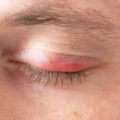
What are the refractive errors of the eye?

What are the refractive errors of the eye?
Ever wondered why some people wear glasses, why others opt for surgery to get rid of them, or why vision sometimes gets blurry? It all comes down to refractive errors of the eye. Simply put, this happens when the shape of your eye doesn’t bend light properly. Normally, light enters through the cornea, passes through the lens, and focuses on the retina to create a clear image. But when this process is disrupted, the image appears blurry—this is what we call a refractive error of the eye.
When this happens, your vision becomes blurry, and you need glasses to help you see clearly. Glasses work by bending light correctly so it focuses on the retina, allowing you to see properly. However, refractive errors of the eye come in different types, each affecting vision uniquely. Let’s take a look at them.
Types of refractive errors of the eye
There are four main types of refractive errors of the eye, and each one affects vision differently. Let’s break them down.
- Myopia
This condition is also known as nearsightedness. People with myopia can see nearby objects clearly but have difficulty seeing distant objects. It occurs when the eye is too long, causing light to focus in front of the retina instead of directly on it. Common symptoms of myopia include blurred vision when looking at faraway objects, frequent headaches, and eye strain, especially after prolonged screen time or reading.
- Hyperopia
Another refractive error of the eye is hyperopia. This condition is also known as farsightedness. People with hyperopia can see distant objects more clearly than close ones. It happens when the eye is too short, causing light to focus behind the retina instead of directly on it. Common symptoms of hyperopia include blurred vision for nearby objects, eye strain, and headaches, especially after reading or working on close-up tasks.
- Astigmatism
This condition is known as astigmatism and is caused by an irregularly shaped cornea or lens, leading to distorted vision at all distances. Instead of light focusing at a single point on the retina, it spreads unevenly, causing blurry or double vision. As a result, a person may struggle to see both near and far objects. Common symptoms of astigmatism include distorted or blurry vision, headaches, eye strain, and difficulty seeing at night, especially while driving.
- Presbyopia
Presbyopia is another common refractive error of the eye in older people. This condition, also known as presbyopia, mostly affects adults over 40. It occurs because the eye’s lens gradually loses flexibility, making it difficult to focus on close objects like reading a book or using a phone. Common symptoms of presbyopia include difficulty reading small text, needing more light for close-up tasks, and experiencing eye strain after prolonged near work.
Now that we know the types of refractive errors of the eye, it’s clear that each one has different symptoms, causes, and impacts on vision. Let, explore their causes.
What Causes Refractive Errors of the Eye?
We have seen the different types of refractive errors of the eye, each affecting vision differently. But what causes these errors? Let’s find out.
Refractive errors are commonly linked to several factors, with genetics being the leading cause. If your parents or other family members have refractive errors, there’s a high chance you might experience similar issues. Age also plays a role, as presbyopia (age-related farsightedness) naturally develops with time, typically around the age of 40. Prolonged screen time, especially in today’s digital world, can contribute to eye strain, leading to blurred vision or headaches. Additionally, eye injuries or surgeries that affect the cornea or lens can alter the eye’s ability to focus light properly, causing refractive errors of the eye. Lastly, certain medical conditions, such as diabetes, can also affect your eye health and increase the risk of refractive problems by impacting the lens or retina.
Refractive errors of the eye and their correction
Refractive errors of the eye can be corrected using various treatments based on individual preferences. The most common method is glasses, which are affordable, widely available, and come with different lenses to correct various refractive errors of the eye. For those who don’t want to wear glasses, contact lenses offer a wider field of vision and come in different types, including soft, rigid, and toric lenses for astigmatism. However, they require proper hygiene to avoid infections.
If you’re looking for a more permanent solution, refractive surgeries like CLEAR, LASIK, PRK, and SMILE reshape the cornea for long-lasting vision correction. CLEAR, a better and advanced technique, is available at ABO Eye Hospital in Nagpur. LASIK is the most popular option, but not everyone is a candidate, so it’s important to consult ABO Eye Clinic for eligibility. Lastly, implantable lenses (ICL) are placed surgically inside the eye, offering a solution for people with high myopia or thin corneas. Each treatment has its benefits, so it’s best to discuss your options with an eye care professional.
Conclusion
Refractive errors of the eye are a common reason for blurry vision, but the good news is that they can be corrected in several ways. Whether it’s glasses, contact lenses, or surgery, there are options to help you see again. If you’re tired of your specs, refractive surgeries like CLEAR, LASIK, or implantable lenses could be a solution. Just make sure to consult with an experienced eye care professional at ABO eye clinic in Nagpur to find what’s best for you. Your vision matters!


